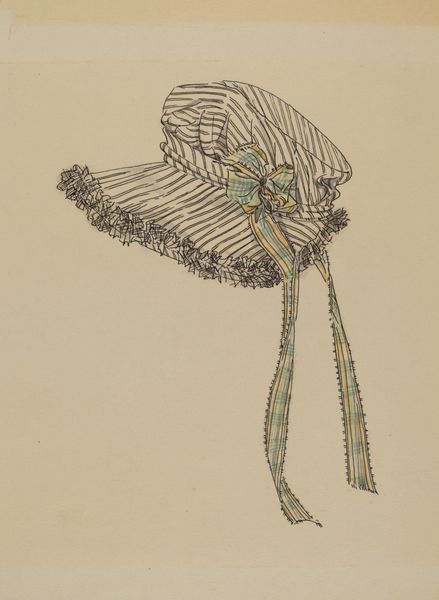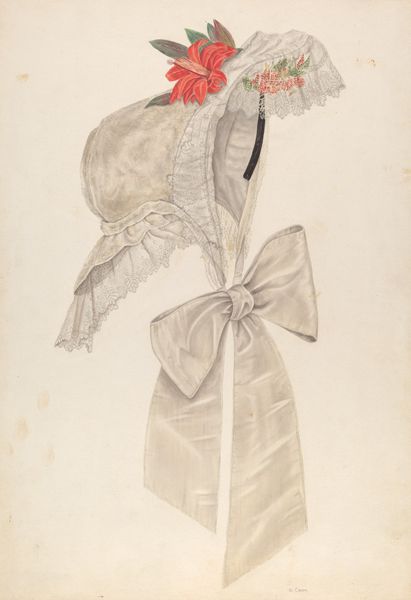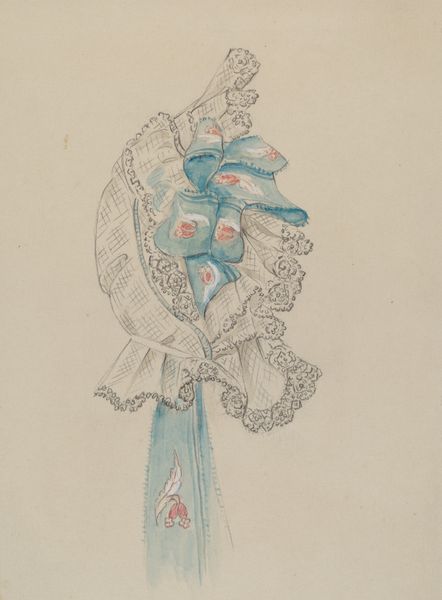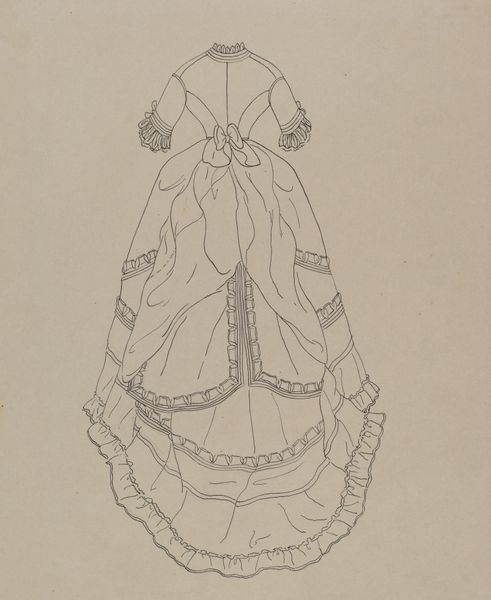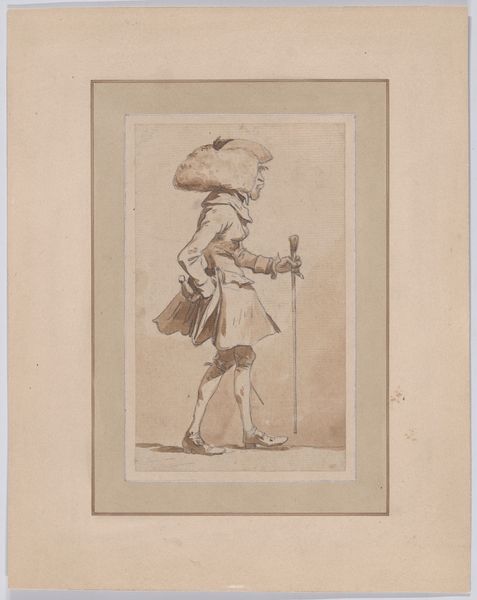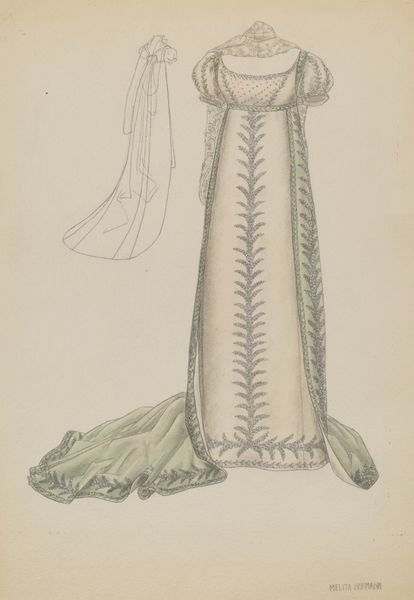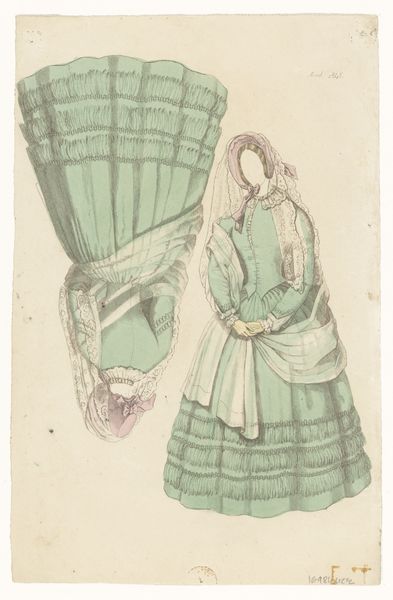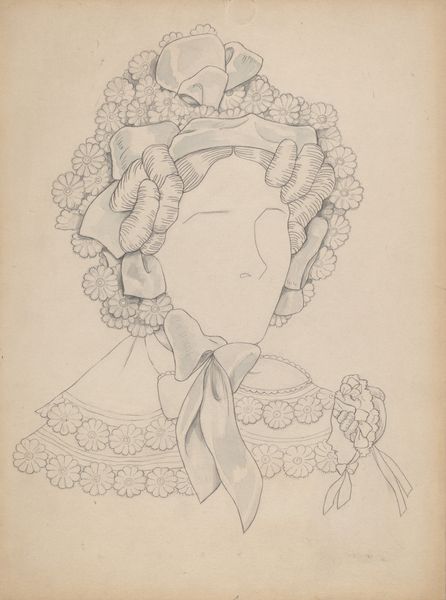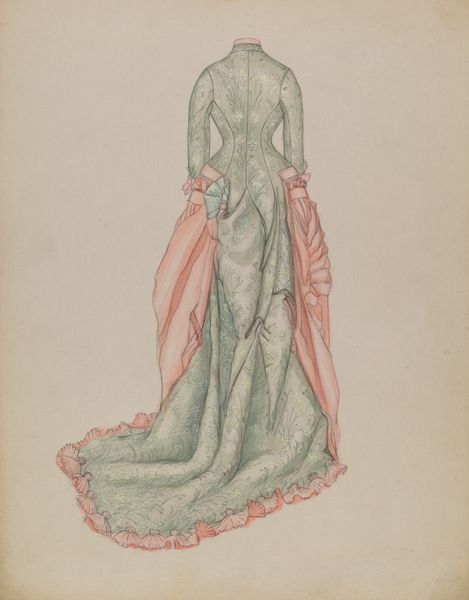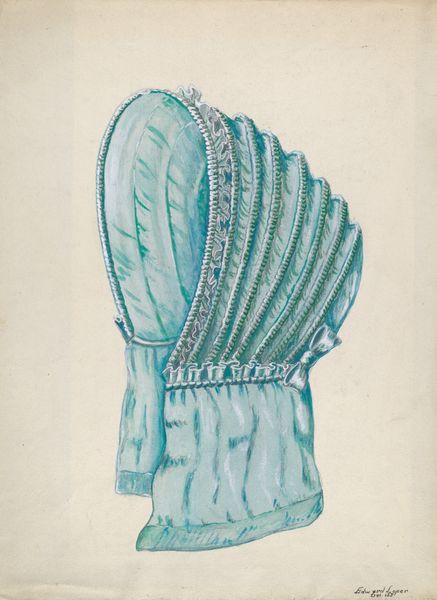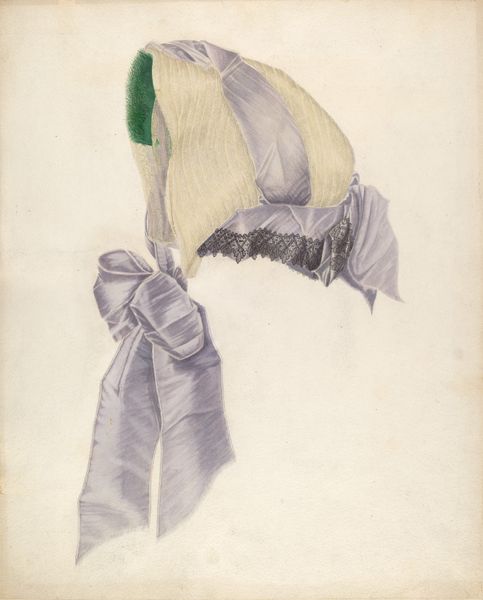
drawing, watercolor, pencil
#
drawing
#
pen sketch
#
figuration
#
watercolor
#
pencil
Dimensions: overall: 12.8 x 10.6 cm (5 1/16 x 4 3/16 in.)
Copyright: National Gallery of Art: CC0 1.0
Curator: Standing before us is Rosalia Lane's piece from around 1936, simply titled "Cap". It appears to be rendered with pencil and watercolor on paper. What strikes you about it at first glance? Editor: Well, there’s a delicate, almost ethereal quality to it. It's unsettling; the figure seems incomplete, like a doll that's been disassembled or perhaps an idea only partially formed. Curator: I find it compelling how Lane uses such basic materials to create such detail. The layering of pencil strokes to suggest texture and form is deceptively complex. Think about the paper she would have chosen. The availability, quality and cost reflect class distinctions, particularly for a female artist at this time. Was this readily available or an expensive material to purchase? Editor: That makes me think about what the cap symbolizes. Is it innocence, status, perhaps even oppression? The clothing appears to confine, yet the lightness of the medium offers a sense of fragility. And who or what is wearing this 'cap'– where's the head, the body? Is this a critique of visibility, a statement about absence within expected roles? Curator: Precisely. Consider the labor involved in the crafting of such a cap; it reflects women’s work within the domestic sphere—time spent on ornamentation that adds to the object's market value. And the skill required! Needlework was both an art and an economic necessity. Editor: It’s hard to divorce this image from conversations around gender and societal expectation. What does it mean to represent a body, or rather, parts of a body, without grounding it in reality? Curator: Right. The visible labor invested by female artisans has always been systematically devalued. By elevating it to the level of high art—a drawing showcased in a gallery—we are challenging conventional aesthetic hierarchies, forcing a reassessment of what constitutes ‘art’ and what is simply seen as craft or hobby work. Editor: I see Lane prompting us to rethink how identities are shaped and obscured by fashion. The incomplete representation allows for many interpretations; race, gender, social status–it is like Lane is demanding viewers to question their presumptions about embodiment and representation. Curator: Lane’s choice to focus on the materiality and to use such readily available, quotidian materials demands we examine this artwork not just aesthetically, but as an historical document. Editor: I appreciate how your analysis highlights the unseen layers within Lane's choice of subject and method. I’m taking away an understanding of how artworks can simultaneously reinforce and subvert power structures. Curator: Agreed, it’s through understanding production that we fully engage in what Lane presents us here.
Comments
No comments
Be the first to comment and join the conversation on the ultimate creative platform.
